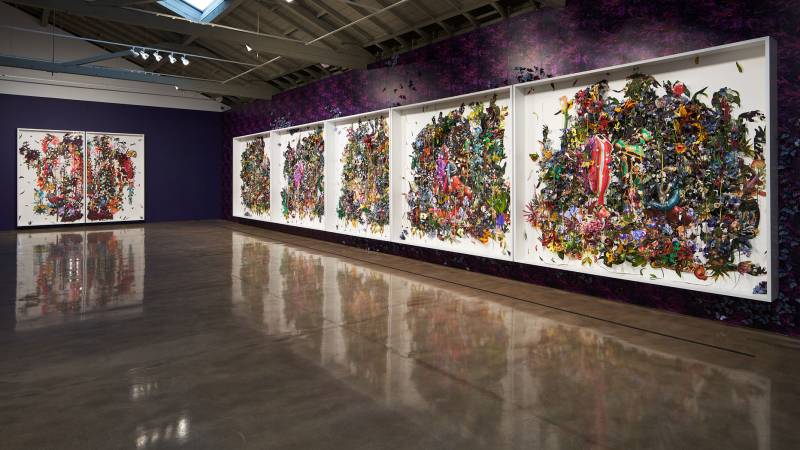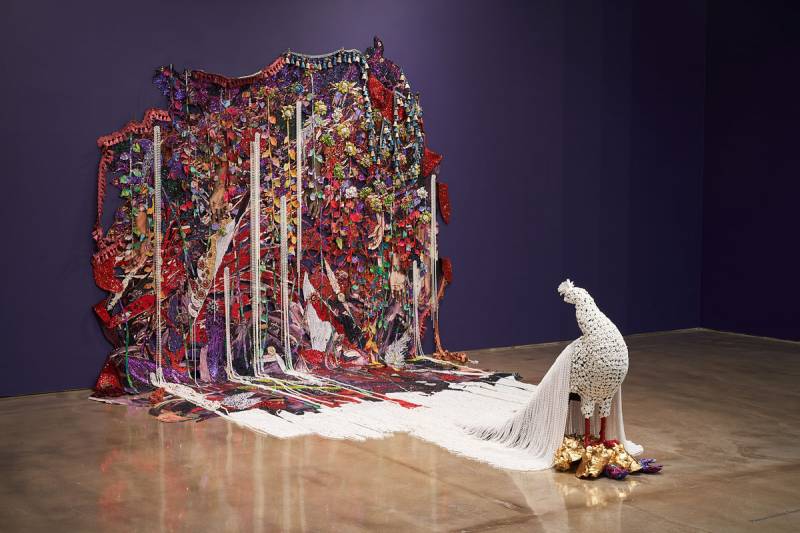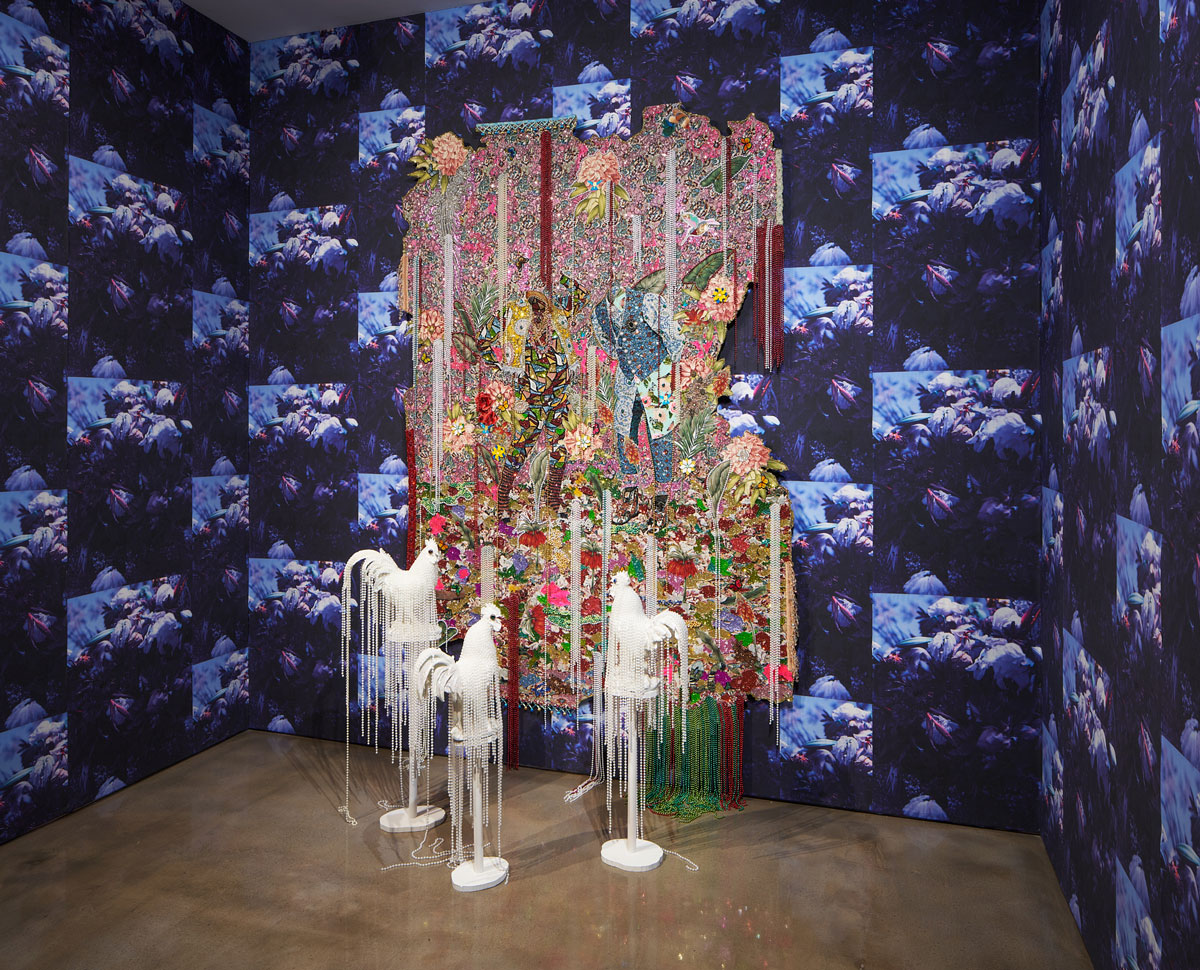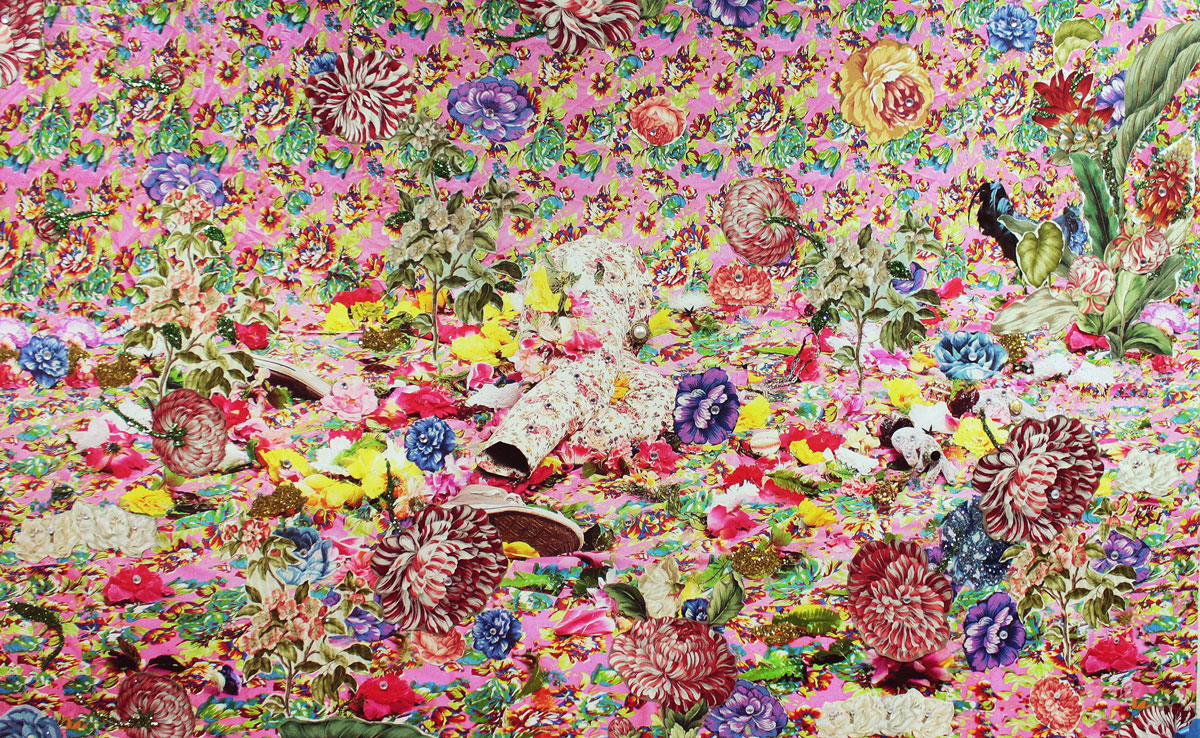For some of us, the past year and a half has been an extended period of decay—good habits lost, new vices found, a cruel winnowing of both social skills and sanity. We gaze with genuine astonishment at those who experienced it as a time of personal metamorphosis, as an opportunity to reinvent oneself in private.
It’s perhaps even more impressive to see this type of change at an institutional level, where existing systems are tied to financial exigencies, grant applications and, in the case of nonprofits, boards. And yet the Institute of Contemporary Art San José has emerged from its long period of closure with a new facade exhibition space, refreshed galleries and, fittingly for this overarching metaphor, filled with butterflies.
Ebony G. Patterson’s solo exhibition …when the cuts erupt…the garden rings…and the warning is a wailing takes full advantage of the ICA’s newly enlarged gallery. (A wall that previously divided the space into three smaller areas is gone.) The artist, who was born in Kingston, Jamaica and is now based in Chicago, morphs the traditional white cube into a night garden, with dramatic spotlighting on her three-dimensional mixed media works and walls covered in dark purple paint or similarly moody photographic wallpaper.

The show comes to San Jose from the Contemporary Art Museum St. Louis, and was organized here by ICA curator Christine Koppes, who borrowed additional pieces from West Coast collections. Touring me through the installation, Koppes explained how the show’s origins came out of a question posed by the ICA’s new executive director Alison Gass, who stepped into the role in July 2020: “What’s your dream show?”
With that as a prompt, it’s hard not to see …when the cuts erupt as a triumphant reinvention. The centerpiece of the show is its largest; …and the dew cracks the earth, in five acts of lamentation…between the cuts…beneath the leaves…below the soil… is framed in five parts and hangs on a purple-hued wallpaper that spreads the artwork 700 inches across an entire ICA wall. Each collaged section, made up of cut-and-torn digital prints, colored paper, fake butterflies and sneakily placed plastic cockroaches, overflows with abundance. Images of flowers, leaves, birds, reptiles, the smiling faces of Black children and silhouettes of hands and feet layer into a cacophony of colors, shapes and patterns.




